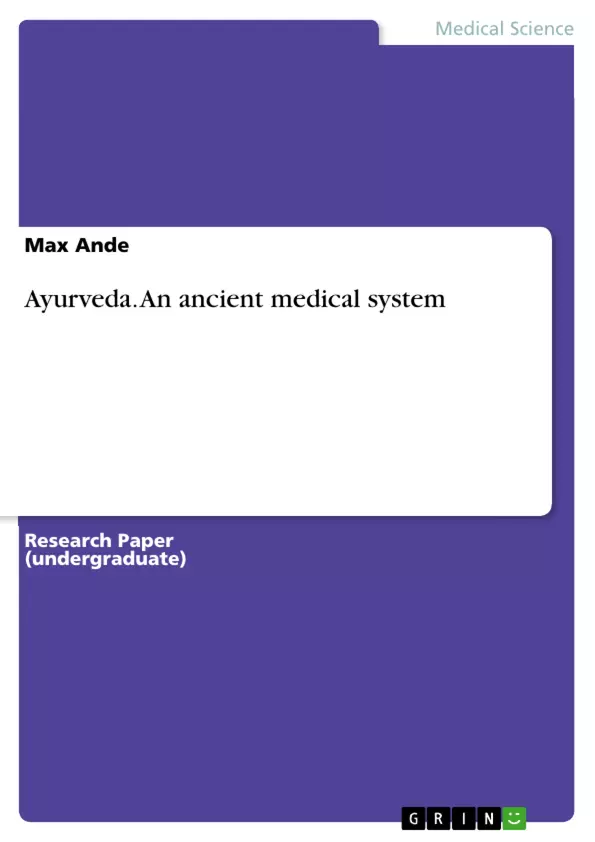If people living in the western civilization think about medicine the first thoughts coming to their minds may be medical scrubs, syringes, illness, science and a lot of complicated words they don’t understand. Terms like philosophy, prevention, responsibility and being in tune with one’s self and the environment aren’t directly related to the orthodox medicine. But that’s what Ayurveda, mankind’s oldest medical system, is all about. Ayurveda is the doctrine of longevity, it’s a religious based science of how to live one’s daily life. This over 3000 years old scheme, invented by wise men who got together at the foot of the Himalaya Mountains looking for methods to cure diseases, recognizes a close relationship between human and a universe where everything (plants, rocks, animals) is inspired.
On the following pages I will look at Ayurvedic medicine, with its basic assumptions, most important forms of therapy, remedies and its special nutrition system.
Table of Contents
- Introduction
- Ayurveda: A millenium-old concept of life
- The Basics of Ayurveda medicine
- The three Doshas
- The Dhatus and Srotas
- Ayurvdic therapy
- Health and illness
- Diagnoses and therapy
- Pancha Karma
- Medical substances
- Ayurvedic nutrition
- Conclusion
- References
Objectives and Key Themes
This seminar paper aims to provide an overview of Ayurveda, the ancient Indian system of medicine. It will explore the core principles, therapies, remedies, and nutritional aspects of this holistic approach to health and well-being.
- The basic principles of Ayurveda and its historical development
- The three Doshas (Vata, Pitta, and Kapha) and their influence on health and constitution
- The seven Dhatus (tissue types) and their roles in maintaining bodily function
- Ayurvedic therapies, including Pancha Karma and the use of medicinal substances
- Ayurvedic nutrition and its role in promoting health and well-being
Chapter Summaries
- Introduction: This section introduces Ayurveda as a holistic system of medicine that emphasizes prevention, responsibility, and connection with nature. It highlights the ancient origins of Ayurveda and its focus on longevity and well-being.
- Ayurveda: A millenium-old concept of life: This chapter delves into the foundational principles of Ayurveda, drawing on the ancient Vedic texts. It explains the concept of the three Doshas (Vata, Pitta, and Kapha) as the primary bioenergetics that govern human health and constitution.
- The Basics of Ayurveda medicine: This chapter examines the core principles of Ayurvedic medicine, tracing its roots back to the Vedas. It explores the role of the three Doshas, the seven Dhatus, and the Srotas (canal systems) in maintaining bodily function.
- The three Doshas: This chapter provides a detailed explanation of the three Doshas: Vata, Pitta, and Kapha. It describes their composition, functions, and how they influence individual constitutions and health conditions.
- The Dhatus and Srotas: This section delves into the seven Dhatus (tissue types) and their interconnected roles in maintaining bodily structure and function. It also introduces the concept of the Srotas, the canal systems that transport substances throughout the body.
Keywords
This seminar paper explores the key principles and concepts of Ayurveda, including the three Doshas (Vata, Pitta, Kapha), the seven Dhatus, the Srotas, Ayurvedic therapies, Pancha Karma, and Ayurvedic nutrition. It investigates the historical development of Ayurveda and its relevance to modern health and well-being.
- Quote paper
- Bachelor of Science Max Ande (Author), 2012, Ayurveda. An ancient medical system, Munich, GRIN Verlag, https://www.hausarbeiten.de/document/311294


